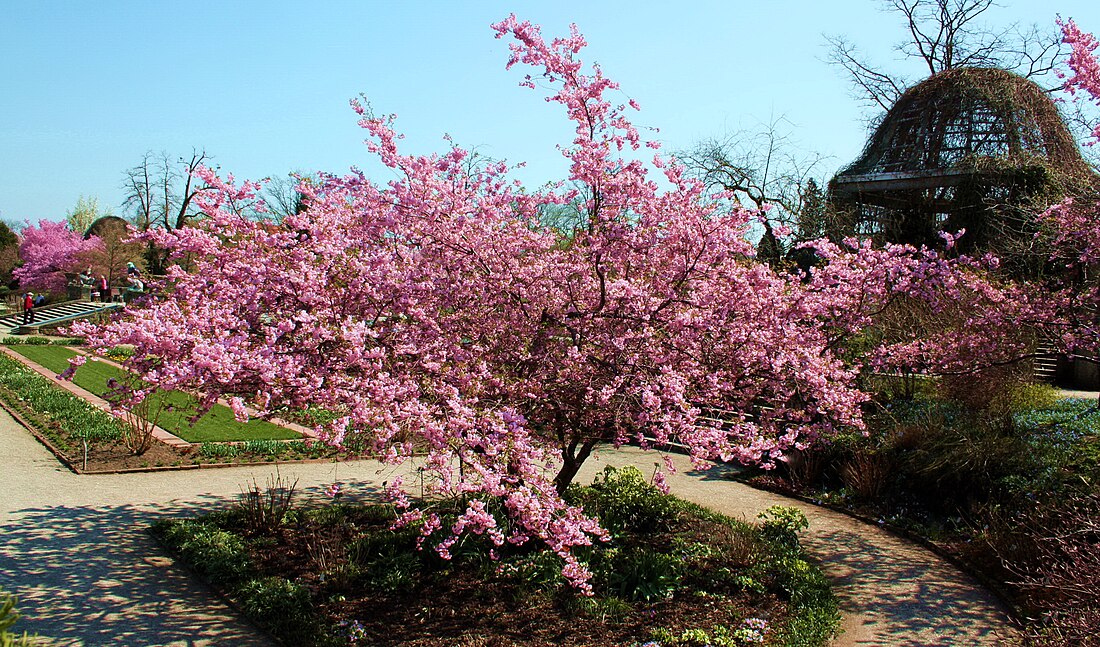Top Qs
Timeline
Chat
Perspective
Prunus sargentii
Species of tree From Wikipedia, the free encyclopedia
Remove ads
Prunus sargentii, commonly known as Sargent's cherry or North Japanese hill cherry,[2] is a species of cherry native to Japan, Korea, Sakhalin (Russia), and China.[3]
The tree was named for Charles Sprague Sargent.[4]
Remove ads
Description

Prunus sargentii is a deciduous tree that grows 20–40 ft (6.1–12.2 m) tall and broad. New growth is a reddish or bronze color, changing to shiny dark green.[5] The obovate leaves with serrated margins are 3–5 inches (7.6–12.7 cm) in length and are arranged alternately. In fall, the leaves turn red, orange, or yellow.[6] It grows single pink flowers on 1-in pedicels, which result in purple-black fruit in summer.[5] The fruits are a favorite of birds, but because of their size (small, pea sized) and color, are considered inconspicuous to humans.[7]
Remove ads
Cultivation
P. sargentii is a fast-growing ornamental tree[8] requiring sun and well-drained soil. The tree can tolerate wind, but not air pollution; it is one of the hardiest cherries, and can be easily transplanted. This makes it suitable for use as a street tree.[5] The tree is moderately drought-tolerant.[6][9]
History
Native to Korea and Japan, the tree was introduced to America and then the United Kingdom in 1908.[citation needed]
Gallery
- Buds
- Flowers
- Flower detail
- Prunus sargentii, 1928 accession (#794-28*B) Arnold Arboretum of Harvard University
- Flowers
See also
- For cherry blossoms and their cultural significance to the Japanese, see sakura.
References
External links
Wikiwand - on
Seamless Wikipedia browsing. On steroids.
Remove ads







